I woke up the next morning late and saw that the Aussies had left nothing but their incredibly dirty sheets behind. There was semen on the window and all over the toilet room. After last night’s debacle, I headed down to reception and informed them of the party. I suggested that when they cleaned the room, they should probably use gloves as there were bodily fluids everywhere. They thanked me and apologized. I headed back up, dodging the puddles of excretions, and chatted a bit more with the other inadvertent and non-participant in the orgy, the girl from England. We both had good laugh about the whole thing. She asked what I was doing for the day and I told her I was planning to go to Dante’s House. We made loose plans to meet up and then I set out.
It was HOT. I walked over to the Piazza della Signoria, past the House of Gucci (also a Florentine family), and made my way to the house of Mr. Algieri. It was a small museum, but well worth the 4€. They had an original Divine Comedy illustrated by none other than Boticelli, which although the subject matter was gruesome, was utterly beautiful.

Another interesting aspect of the museum was that it talked about the Medici banking system and the Florin. The Florin was the currency of Florence and surrounding Tuscany. It was so strong that it could be traded on international currency markets.
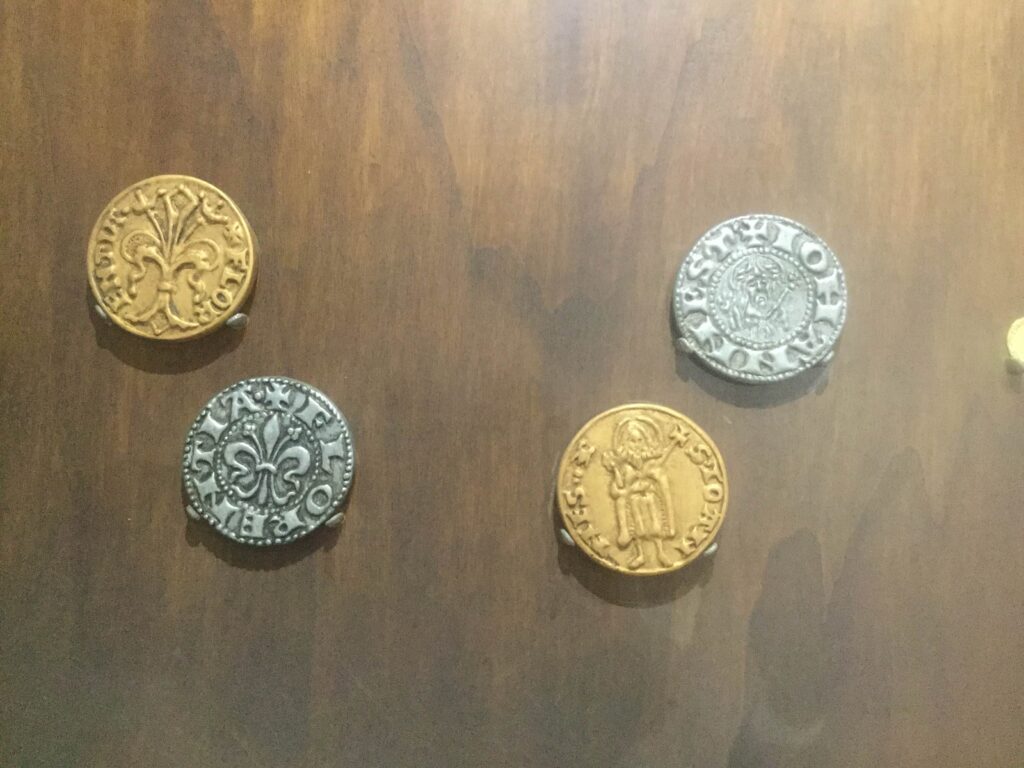
I went back to the hostel and did some work for one of my clients. My Scottish friend came back and I helped her fix her bikini top before I headed to the roof to have a beer.

The next day, I decided I was going to go full-blown tourist under the Tuscan sun: a Vespa tour. I met my group at the office right down the street from the hostel and met my tour mates, an Aussie couple. Valentina, our driver, gave us a pleasant journey to the satellite office of the tour, telling us all about Florence and scenic things along the way. One of them was an American cemetery for those that died fighting in World War II. I had no idea there was even a campaign in Florence. I made a mental note to try and get to this hallowed ground if I could.

We got to the satellite office and filled out some paperwork, basically saying that we were taking our lives into our own hands and not to hold the company responsible for the way Italians drive. Manolo, our tour leader, gave us a primer before we set out. The last time I drove one, Clinton was still in office. I was visiting my cousins in San Francisco and they invited me to take their new bike for a spin. I had no idea what I was doing and made the mistake of trying to stop with my feet. Needless to say, I would need a few laps around the parking lot to get reacquainted before I felt comfortable letting loose on an Italian roadway.

We set out. And it was everything I hoped it would be. Like when I was back in Vietnam sitting in that boat going down the Mekong, I had visualized this. We traveled over the rolling hills of Tuscany, looking out at olive trees and vineyards with nothing but clear blue skies above us. I understood again why this was such a beautiful place.

We stopped at a winery for our included lunch. They greeted us with a glass of wine, gave us a tour, gave us some more wine, then we sat down for lunch with some more wine. Now, it might have not been the best idea to get tourists this thoroughly lubricated before setting us back on Italian roads on little bikes, but who cared? Manolo asked if we were ready to go back or if we should take the scenic route home? I looked at the Aussies and the Aussies looked at each other, and we all said at the same time, scenic. Now, these were little bikes and they all had some trouble going up steep hills, but damn, it was gorgeous. We putted along until we finally got back to the satellite office. It was a fabulous day and worth every centesimo.
When I got back to the hostel, I had a small dinner as I was still full from lunch at the vineyard. I took some Nyquil because I felt a cold coming on which knocked me out good and proper after watching a few episodes of the hilarious Derry Girls.

Feeling refreshed, I woke up the next day and headed to the Palazzo Vecchio to do a tour of the building. With construction beginning in 1299 by the same gentleman that was the initial architect of the Duomo and Santa Croce, Arnolfo di Cambio, it was built over the ruins of another palace, the Palazzo dei Fanti. Palazzo dei Fanti was once owned by the Uberti family that were considered rebels against the new Florentine power structure. The Palazzo Vecchio was built on this spot so the Uberti family could never reclaim that land. The Palazzo Vecchio was the center of power in Florence and is an amalgam of this region’s Roman heritage, Medieval architecture, and Renaissance Art.

While this place has such a fascinating history, the highlights for me were threefold. The first is that the entire building is climbable. While the passages were narrow as only medieval architecture could be, I traversed the stairs and took a break in the very cell that held Cosimo di Medici when he was imprisoned after the failure of the campaign to conquer the Republic of Lucca by the Albizzi family. As I continued climbing, it was something to be standing on a tower looking down on the tourists, imaging they were invading hordes and my bubbling hot oil was at the ready.

While the Palazzo Vecchio was filled with giant rooms of Renaissance art, one piece I found incredibly fascinating was a simple plaster cast. It was the custom of the era that at the time of death, a plaster mold would be made of an important person’s face. In a small room, I stood face to face with the death mask of one of Florence’s most famous sons, Dante.

The final part of the Palazzo Vecchio was the Salone dei Cinquecento or the Hall of the Five Hundred. This massive room was supposed to house the 500 representatives of the Florentine Republic after the ouster of the Medicis. However, what I found fascinating was that this was the very hall where the unification or Risorgimento of Italy was ratified before the capital of the Kingdom of Italy was moved to Rome in 1871.

After the Palazzo Vecchio, since it was a multi-site pass, I headed to the San Lorenzo Church. This was a place I passed every day but had no idea what was inside. Apparently, this was the church where a lot of the Medici’s found their eternal resting places. And it was an awesome sight to behold. However, even with their grand marble tombs, their names etched on these great walls and on sites all around Florence, they were still dead. I was reminded of the adage that at the end of every game, both the king and the pawn go in the same box.

I tried seeing a few more sites, but it was later in the day and absolutely packed. I went back to the hostel, relaxed a little while I made plans for my final week in Florence to see the things I needed to see. I went to the roof and drew some, then got some dinner and a drink. I finished my night on the roof.
The next day, I crossed the Arno very early to visit the Palazzo Pitti, or Pitti Palace. I got in for half price because I was there so early. The Pitti Palace was built in 1458 as the main residence of Lucia Pitti, a very rich Florentine banker. It was bought 100 years later by the Medici family and served as their main city residence. An interesting fact about it is that there is a raised walkway that goes all the way from the Palazzo Vecchio, through the Uffizi, over the Ponte Vecchio, through a church, ending at the Pitti Palace. This was constructed by the Medicis so that they could go from one to the other without having to interact with the commoners of Florence, but also severely minimized assassination attempts, of which the family was very familiar.
The Pitti was the biggest museum of Florence with many, many salons filled with priceless art, furniture, and jewelry all splayed out for the wide-eyed tourist to admire. However, it was also the home of one very special visitor. In his European conquest, Napoleon made sure to billet at this wonderful palace, and no tour would have been complete without seeing his bathroom.

After getting my fill of the Palace, I headed up to La Loggia for my weekly Fernet Branca; thinking about everything and nothing at all. I then headed back to the hostel, had lunch, and rested in my room. I took in a viewing of the film Inferno, a very far-fetched story about a deranged billionaire releasing a virus into the world as a part of his depopulation agenda, as the city made a wonderful appearance.
I headed back up to the roof, cocktail in hand, and did some more drawing. After this, I went back and had dinner where I made friends with a French girl named Helen. She was studying the incredibly interesting field of wood engineering, in that learning how to increase timber yields in her native France. She told me that she just arrived and mentioned that it was a little overwhelming. I told her that I had been in Florence for about a month and asked if she would like a bit of a tour. She smiled and said she would love it. So, we headed out into the night. I made sure to show her all the highlights of the things I had seen, channeling Rick Steves. We went to the Piazzia di la Signoria, the Loggia, the Uffizi, the Ponte Vecchio, the Pitti Palace, and the Pizzale di Michaelangelo. On the way back, I asked if she would like to hear a ghost story. She noded.

Behind the Palazzo Vecchio, there was a building with some stairs, so we took a seat. To the right of where we were sitting, there was a building with a brick protrusion about three stories above the ground. Since we were in the justice complex of Florence, this building was the jail. Various types of criminals were housed there in the 15th and 16th centuries. Murderers and thieves got similar punishments; death by hanging. A lot of the time, when sentences were carried out, it was expected that every able-bodied man, woman, and child were to be there to watch the executions so that it would serve as a crime deterrent. One of these young men in the crowd became very excited when he learned there would be an execution. He was a bit eccentric, a homosexual, and there was a buzz all over town about how strange he was. He was able to hold down some odd jobs, enough to scrape out a pittance. With this pittance, he struck up a deal with the jailer that from sundown to sun up, he would be given the dead body of the criminal before burial and would be allowed to do anything with it in the backroom of the jail without disruption. This happened a few times, and the rumor mill began spinning out of control. What was this man doing? Was he a devil? Was he drinking their blood? What gross sexual things was he doing with these corpses? It got so bad that, due to his service to the wealthy around town, he was asked nicely but sternly to leave the city. This man’s name? Leonardo Da Vinci. What was he doing? Studying human anatomy via dissection. In this era, science was still in its nascent stages, and examining the human body was close to heresy, especially that of the deceased.
Helen appreciated my story and we then headed back to the hostel. We said our goodnights and I headed up to bed. I had a very big day, seeing one of the loves of my life.

I woke up early, a little nervous, had breakfast, and hiked over where we were going to meet up at the Uffizi gallery, the epicenter of Italian Renaissance Art. I got my tickets, steadied myself, and headed in. I had a little time to kill, so I went upstairs and got my Rick Steves on guiding me around the museum. After seeing my share of Leonardos, Michaelangelos, and Caravaggios, I knew it was time to see my girl.
I headed down a floor and there she was, still looking as fierce as ever. Her red hair seemed to glisten; her alabaster skin seemed to sparkle. I tried to contain my composure, but I could start to feel an incredible euphoria. I had honored my six-year-old oath to see her again. Venus stood before me in all her radiant glory.
 The Birth of Venus by Sandro Botticelli was made probably in the later 1480s. It was surmised to have been painted to be a house warming present for a new villa purchased by the Medicis, patrons of Botticelli.
The Birth of Venus by Sandro Botticelli was made probably in the later 1480s. It was surmised to have been painted to be a house warming present for a new villa purchased by the Medicis, patrons of Botticelli.
I stood there for an hour as the maddening crowd shuffled around me, memorizing every line and curve of Boticelli’s Birth of Venus. To me, this was the greatest piece of painted art in the entire Renaissance. However, situated right next to it was another piece of Boticelli titled the Calumny of the Apelles. It was a much smaller piece painted during the era of Savonarola, that priest that preached an end to these types of “pornographic” work causing both artists and their works to go into hiding or risk destruction. Botticelli did not like this, so he painted the Calumny to show his disgust. How easily could this work have ended up in a bonfire at the Piazza de la Signora? Unfortunately for him, Savonarola ended up in a pyre instead.
Something else dawned on me while I was staring at Venus, other than the fact that the boobs on the visually impaired model adjacent to the painting were surprisingly clean and well polished. It was that I knew I had to go, but did not want to leave. I just wanted to stay there for the rest of the day and into the night looking, experiencing, watching, gandering, and just admiring my most favorite picture of Renaissance art. But, I had to leave. My feet hurt, my legs hurt, there was more art to see, etc. All the excuses. And then it came to me, this was a perfect metaphor for life. We all want to stay with things, places, people that make us happy. But time and circumstance remind us that the time shared cannot last forever. Instead of being bitter and sad that the time ended, while difficult, it is important to remember the good times had. And the converse of that is that nothing lasts forever, even cold November rain.
I lovingly gazed at my girl one final time. I did not say goodbye but rather that I would see her again. I took a final look and headed out.

The next day, it was time to go see my favorite piece of Renaissance sculpture, David at the Accademia . Hiking over to the Accademia, I paid for my ticket and went in. Again, I had Rick Steves guide me around the museum then there he was! Although, there were still other parts of the museum I wanted to see before I could give him all of my attention. Part of the museum that was interesting that I did not see before was their section on music. Apparently, the Piano was invented in Florence. However, its full name was Piano-Forte, Italian for plain and hard. Unlike its precursor, one could change the force on the keys to alter the strength of the sounds that were played.
I then went back out to the main salon and stared at David for more than an hour. The attention to detail was beyond intricate. Like there was a seven foot tall man covered in plaster just standing there. But like the lesson I learned with Venus, about the inevitable marching of time, I said goodbye and came back to the hostel. I made lunch and wanted to take a nap, but the room was being cleaned, so I headed to the pool. I was there for a bit, then headed to the roof for a beer. I had dinner and went for a walk.
At the Loggia in the Plaza della Signoria, I sat with my back to the wall looking out and watching all the tourists with their gelatos looking at the beautiful ring of sculptures around me as I pressed play on the podcast.
The ’70s were a very weird time. There was a phenomenon where men began to murder people in a series in highly ritualistic and usually sadistic ways. These men would become known as serial killers. But, this was not just an occurrence in America. From 1974 to 1985, 14 people were murdered in the hills surrounding Florence. They were usually young couples doing what young couples do in parked cars on hilltops. The victims were generally shot with a .22 Beretta and then stabbed to finish the deed. The male victims were left untouched, but the female victims were generally mutilated with parts being taken as trophies. And it paralyzed the entire city with fear. The police were under tremendous pressure to find the guilty party and whenever that happens, shortcuts are taken. They were so pressed that they even took in the main investigative journalist as the suspect which was later disproven. The real killer (or killers) were never caught. There had been theories that the famed Zodiac Killer came to Florence on vacation as the cases were similar. This story made international headlines and inspired a young writer to come to witness the trial. The details of the case sparked his imagination and in his first book Red Dragon, Thomas Harris gave birth to the monster we all would come to know as Hannibal Lecter.
The next day was a relaxing one. I just hung out by the pool soaking up my last bit of Tuscan sun. I walked around on my nightly constitutional and returned for karaoke night at the hostel. A bunch of Aussies made their selection. It was a famous Australian rock song from the band Cold Chisel that highlighted the life of a Vietnam veteran after the war. It was called Khe Sanh and it became my new favorite song. There was another gentleman that got up and did a stellar rendition of Feeling Good by Nina Simone. But the highlight of the night was a Chinese gentleman that got up and sang The Greatest Love of All by Whitney Houston. He was tone-deaf, couldn’t hit the high notes, and his English was terrible, but the amount of passion he put into his performance got him a standing ovation from everybody there, including me.
I went up to my room and met my new young drunken female Australian roommates. I had just gotten out of the shower and was in my robe when they came over and hugged me for a greeting. They were going out and one of them didn’t like her outfit, so she took off her dress, her bra, and her panties while laying back on the floor as I was standing there. She could see the puzzled look on my face and simply said, it was OK, we were all friends now. After she changed, I helped her up and they left. Love it or hate it, the Australian joi de vivre is a force of nature all its own.
My last day in Florence began with me arriving in the kitchen to find some old bat going through my food after she had already took some of my tea. There was a rule that all food needs to be labeled, which I had done and placed it high on top of a cabinet. This woman went and got a chair to get it and started rummaging through it, not noticing the label on the bag. I saw it was on the table, looked her dead in the eye while I took it from here, got what I needed and put it back up on the shelf. Hostel life.

I had saved what I most wanted to do for the last day in Florence, a tour of the Duomo. I got a fast pass so I did not need to wait in the throng of Tuesday morning during tourist season. It was already hot out, but the cool and a little musty shade of a cathedral was just my way to beat the heat. I climbed the stairs and made it to the top of the Cupola. As I was looking down, I realized I was putting all my faith in hundreds of years old walkway that could crumble at any time hurtling me to the waiting, unforgiving stone floor hundreds of feet below me. I just kept my eye on the prize and made it to the roof. It was spectacular. Red rooftops as far as the eye could see.

An interesting aspect they had was a graffiti deterrent. I had seen it all over the world of people marking historical places with their initials. This even included a high school classmate when we took a school trip to Gettysburg. What the geniuses at the Florence tourism office did was set up a kiosk where people could virtually graffiti something on an iPad, save it to the record to be viewed later, and even have it emailed.
I then went over to the Baptistry which was smaller than it looked, then scaled the bell tower or Campanile. I then went to see the real Gates of Paradise.

The Gates of Paradise were the bronzed doors created by Lorenzo Ghilberti that were originally the entryway of the Baptistry and took 27 years to make. The multiple panels there represented different elements of bible stories, but what was most interesting about them is that it was some of the first work to start to utilize perspective, in that objects closer to the observer are bigger and ones further away are smaller. This was a new school of thought for art at the time. If you look at Medieval art, everything and everyone looks the same size. Another interesting fact is that the door currently on the Baptisty were copies, much like the David hanging outside of the Palazzo Vecchio. The real ones were located safely behind glass at the museum.

I headed back to the hostel to relax a little from the sun. I then went out to find some Grappa for my brother-in-law. I put on some good clothes then headed to La Loggia for my final dinner in Florence. While I was eating my chicken liver pate with a nice Chianti, I noticed a rather loud and eccentric couple. I knew I had seen this guy somewhere before. He was older with curly black hair, sunglasses, and a felt hat; imagine Slash’s Italian grandfather. Then, it hit me. I was 85% sure this was Zucchero, an Italian pop star that had a major hit, Baila Morena, when I was living in Spain.
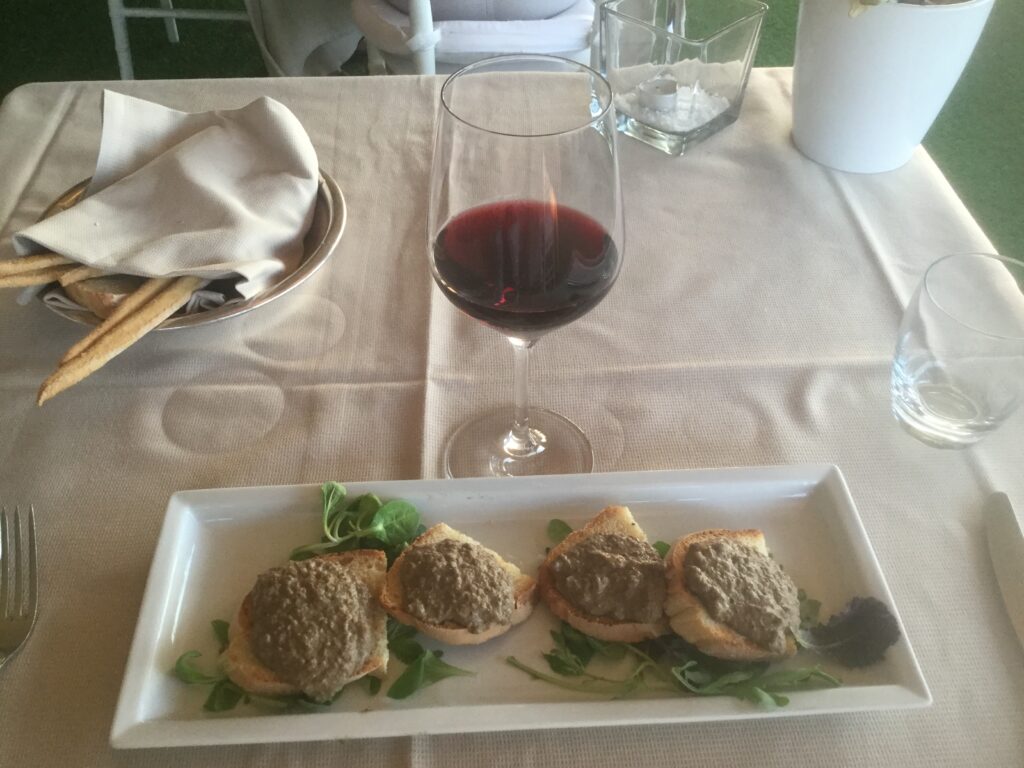
After dinner, I took one last long look at Florence from the Piazzale Michelangelo, all the lights, the river, the rooftops, the Duomo, the Pallazo Vecchio, and the Uffizi. I was incredibly happy.





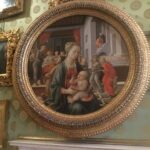





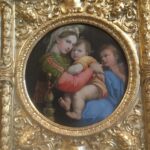


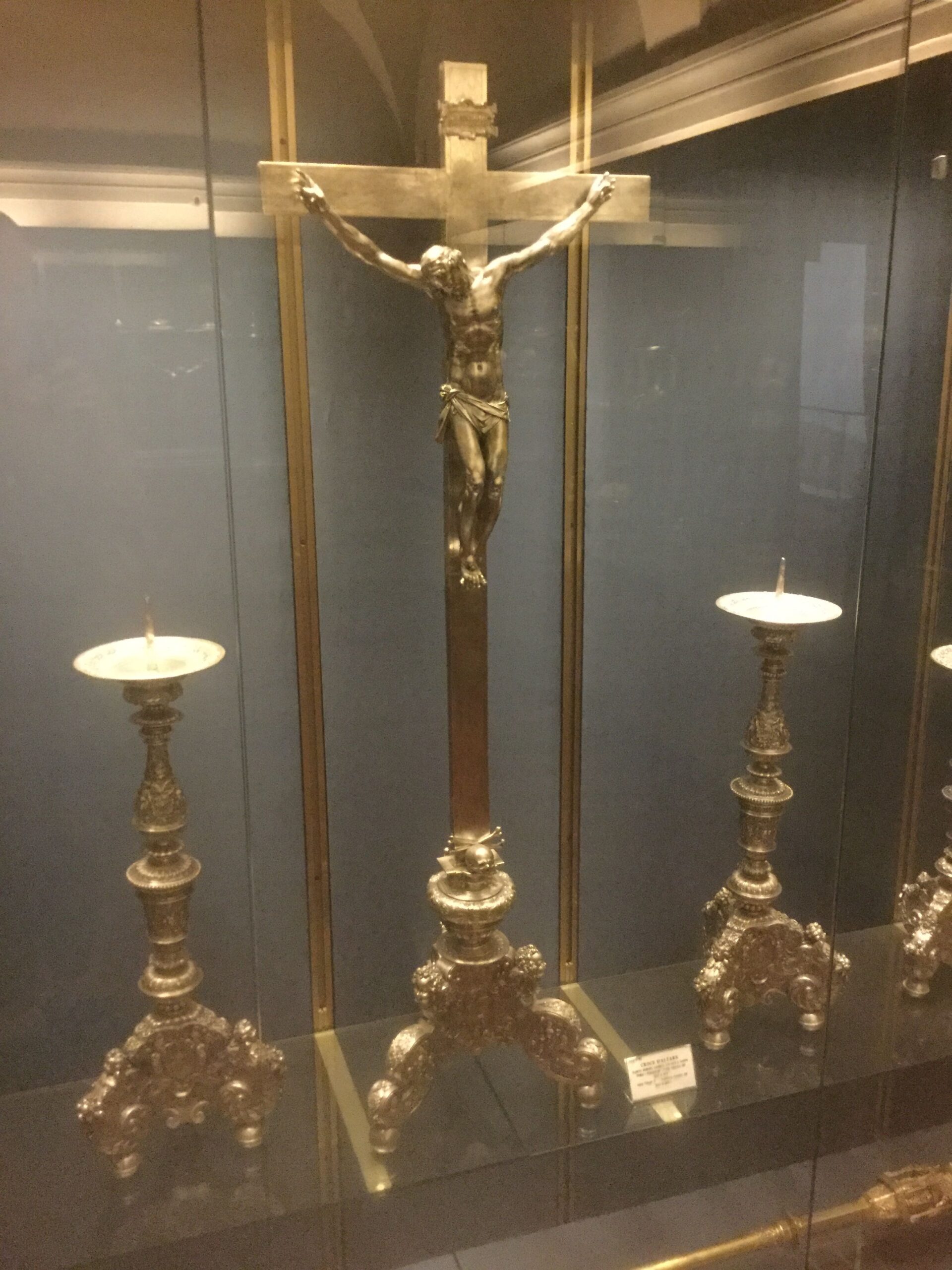
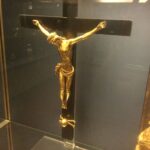






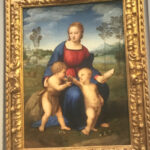






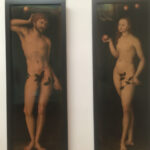









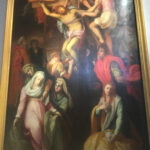

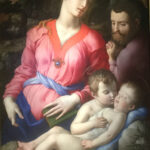













No comment yet, add your voice below!